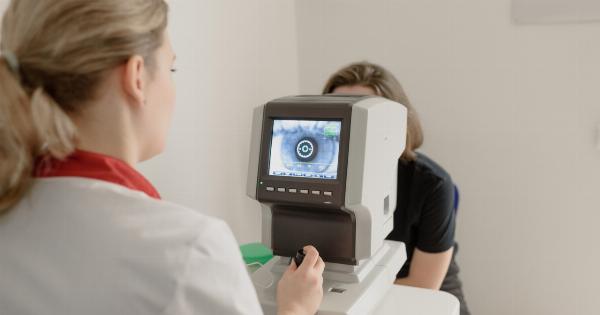Visual issues can affect individuals of all ages, including children. However, there are certain visual problems that are more prevalent in specific age groups.
It is essential for parents, teachers, and healthcare professionals to be aware of these age-appropriate visual issues in children to detect and address them promptly. This article will discuss some common visual problems that children may experience at different stages of their development.
1. Refractive Errors
Refractive errors are the most common visual issues in children. They occur when the shape of the eye prevents light from focusing directly on the retina, leading to distorted vision. Some common refractive errors in children include:.
– Myopia (nearsightedness): Difficulty seeing distant objects clearly.
– Hyperopia (farsightedness): Difficulty seeing close objects clearly.
– Astigmatism: Blurred or distorted vision at any distance.
2. Strabismus
Strabismus, also known as crossed or turned eyes, is a condition characterized by the misalignment of the eyes. It occurs when the eye muscles do not work together, resulting in one or both eyes turning inward, outward, upward, or downward.
Strabismus can affect the development of depth perception and binocular vision in children.
3. Amblyopia
Amblyopia, commonly known as “lazy eye,” occurs when the brain and eye do not work together properly. It is often caused by a significant difference in refractive error or misaligned eyes.
If not treated early, it can lead to permanent vision loss in the affected eye. Patching or blurring the stronger eye is a common treatment method to stimulate vision in the weaker eye.
4. Convergence Insufficiency
Convergence insufficiency is a condition in which the eyes have difficulty working together when focusing on nearby objects.
Children with convergence insufficiency may experience eyestrain, double vision, blurred vision, or headaches when reading or performing close-up tasks.
5. Color Vision Deficiency
Color vision deficiency, often referred to as color blindness, is more common in males than females. It is a genetic condition that affects the ability to perceive and differentiate certain colors.
Color vision deficiency can impact a child’s academic performance, particularly in subjects that involve color-coded information.
6. Binocular Vision Disorders
Children with binocular vision disorders have difficulty using both eyes together effectively. These disorders can lead to symptoms such as eye strain, double vision, poor depth perception, and difficulty reading.
Proper diagnosis and treatment are crucial to prevent further visual complications.
7. Computer Vision Syndrome
Computer vision syndrome (CVS) is a condition that can affect children spending excessive time on digital devices. It encompasses a range of vision problems caused by prolonged screen time, including eyestrain, headaches, dry eyes, and blurred vision.
Encouraging regular breaks and proper screen ergonomics can help alleviate CVS symptoms.
8. Retinoblastoma
Retinoblastoma is a rare and potentially life-threatening eye cancer that typically affects children under the age of five. The most common sign is a white glow in the affected eye, typically seen in flash photography.
Early detection and treatment are crucial for the best possible outcomes.
9. Drooping Eyelid (Ptosis)
Ptosis is a condition characterized by a drooping eyelid that may cover part of the eye’s pupil. It can be present from birth or develop later in childhood due to muscle problems or nerve damage.
Ptosis can obstruct vision and lead to amblyopia if left untreated.
10. Retinopathy of Prematurity
Retinopathy of prematurity (ROP) is a condition that affects premature infants who have undergone oxygen therapy. It occurs when abnormal blood vessels develop in the retina, potentially leading to vision problems or even blindness.
Regular eye examinations are essential for early detection and appropriate intervention.
Conclusion
Visual issues can significantly impact a child’s overall development and educational progress. Identifying and addressing age-appropriate visual issues in children is paramount to ensure their visual well-being.
Regular eye examinations, proactive monitoring, and early intervention play a crucial role in maintaining and improving children’s visual health.



























